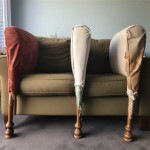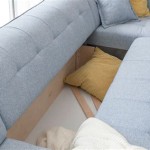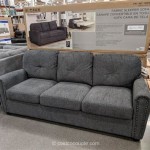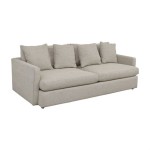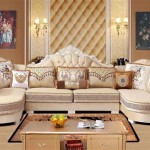Modern Grey Sofas: A Comprehensive Guide
The modern grey sofa has become a staple in contemporary interior design, prized for its versatility, neutrality, and ability to seamlessly integrate into a wide range of aesthetic styles. From minimalist apartments to maximalist living rooms, the grey sofa consistently proves to be a sophisticated and adaptable choice. This article delves into the multifaceted appeal of the modern grey sofa, exploring its various shades, styles, material options, and how to effectively incorporate it into different living spaces.
One of the primary reasons for the grey sofa's enduring popularity is its exceptional neutrality. Unlike bolder colors that can quickly become overwhelming or limit design choices, grey serves as a blank canvas upon which other elements of the room can be built. This neutrality facilitates flexibility in decorating, allowing for easy integration of accent colors, patterns, and textures without creating visual discord. A grey sofa can effortlessly transition from a calming, monochromatic scheme to a vibrant, eclectic setting simply by changing the accompanying accessories.
The term "modern" in the context of grey sofas encompasses a broad spectrum of design aesthetics. It can refer to clean lines, geometric shapes, and minimalist detailing, reflecting a contemporary sensibility. Alternatively, it can also encompass mid-century modern styles with their characteristic tapered legs, button-tufted cushions, and organic curves. The adaptability of the grey sofa allows it to seamlessly blend with these different interpretations of modern design, making it a versatile choice for homeowners with varying preferences.
Understanding the Spectrum of Grey
The color grey is far from monolithic; it exists on a vast gradient ranging from the lightest, almost-white shades to deep, charcoal tones. Each shade evokes a different mood and interacts uniquely with light and other colors in the room. Understanding the nuances of grey is crucial for selecting the perfect sofa that complements the overall design scheme.
Light grey sofas, such as those in shades of dove grey or light ash, offer a sense of airiness and spaciousness. They are particularly well-suited for smaller rooms or spaces with limited natural light, as they reflect light effectively and prevent the room from feeling cramped. Light grey also pairs exceptionally well with pastel colors, creating a soft and inviting atmosphere. In contrast, darker grey sofas, like charcoal or slate grey, exude a sense of sophistication and drama. They serve as a strong anchor in a room and can be used to create a striking contrast against lighter walls and accessories. Dark grey sofas are a popular choice for modern industrial or minimalist interiors.
Beyond the simple light-to-dark spectrum, grey also has undertones that can significantly impact its appearance. Grey with cool undertones, such as blue or green, tends to feel more modern and sophisticated. These shades work well with cool-toned color palettes, such as blues, greens, and purples. Grey with warm undertones, such as beige or yellow, evokes a sense of comfort and coziness. These shades complement warm-toned color palettes, such as oranges, reds, and yellows. When selecting a grey sofa, it is essential to consider the undertones and how they will interact with the existing colors in the room to ensure a harmonious and cohesive look.
The choice of grey shade also depends on the desired aesthetic. For a Scandinavian-inspired interior, a light grey sofa with clean lines is a natural fit. For a more luxurious and glamorous setting, a dark grey velvet sofa with tufted detailing would be a more appropriate choice. Ultimately, the selection of grey shade is a personal decision that should be guided by the overall design vision for the space.
Exploring Material Options and Textures
The material of a grey sofa significantly influences its appearance, feel, and durability. A wide array of material options are available, each with its unique characteristics and suitability for different lifestyles and design preferences.
Linen is a popular choice for its natural texture, breathability, and casual elegance. Linen sofas offer a relaxed and inviting feel, making them ideal for comfortable living spaces. However, linen is prone to wrinkling and staining, requiring regular maintenance. Cotton is another natural fiber option that is durable, easy to clean, and relatively inexpensive. Cotton sofas are a practical choice for families with children and pets, but they can be susceptible to fading and staining if not properly treated.
Velvet sofas exude a sense of luxury and sophistication. The plush texture and rich color depth of velvet add a touch of glamour to any room. However, velvet can be more delicate than other materials and may require professional cleaning. Leather sofas are known for their durability, timeless appeal, and ability to develop a beautiful patina over time. Leather is a resilient material that is easy to clean and maintain, making it a practical choice for high-traffic areas. Faux leather, or vegan leather, is a more affordable alternative to genuine leather that offers a similar look and feel.
Microfiber is a synthetic material that is highly durable, stain-resistant, and easy to clean. Microfiber sofas are an excellent choice for families with children and pets, as they can withstand heavy use and resist spills and stains. Bouclé is a looped fabric that adds texture and visual interest to a sofa. Bouclé sofas offer a cozy and inviting feel, making them ideal for creating a comfortable and stylish living space. Chenille is a soft and plush fabric that is known for its velvety texture and durability. Chenille sofas offer a luxurious feel and are resistant to wear and tear.
The texture of the material also plays a significant role in the overall aesthetic of the sofa. A smooth, tightly woven fabric will create a more formal and refined look, while a textured or nubby fabric will add visual interest and create a more relaxed and inviting feel. Consider the texture of the material in relation to the other textures in the room to create a cohesive and balanced design.
Integrating a Grey Sofa into Different Design Styles
The versatility of the grey sofa allows it to seamlessly integrate into a wide range of design styles, from minimalist to maximalist and everything in between. Understanding how to effectively incorporate a grey sofa into different design styles is crucial for creating a cohesive and harmonious living space.
In a minimalist interior, a light grey sofa with clean lines and minimal detailing is a perfect choice. Pair it with neutral-toned accents, such as white walls, wooden furniture, and natural textures, to create a calming and serene atmosphere. Avoid clutter and keep the space uncluttered to maintain the minimalist aesthetic. A Scandinavian-inspired interior benefits from a light grey sofa with tapered legs and simple cushions. Add warmth with natural wood elements, soft textiles, and pops of color in muted tones, such as blues, greens, and yellows. Incorporate cozy throws and pillows to create a comfortable and inviting space.
For a modern industrial interior, a dark grey leather or microfiber sofa is a fitting choice. Pair it with exposed brick walls, metal accents, and concrete floors to create a raw and edgy aesthetic. Add pops of color with artwork or accessories to break up the monotony. In a mid-century modern interior, a grey sofa with button-tufted cushions and tapered legs is a classic choice. Incorporate vintage furniture, geometric patterns, and warm wood tones to create a retro-inspired look. Add pops of color with vibrant artwork or accessories.
In a Bohemian-inspired interior, a grey sofa can serve as a neutral backdrop for a vibrant and eclectic mix of colors, patterns, and textures. Layer the sofa with colorful pillows, throws, and textiles from different cultures to create a global-inspired look. Add plants, artwork, and personal mementos to create a unique and personalized space. For a maximalist interior, a grey sofa can be used as a grounding element amidst a riot of colors, patterns, and textures. Layer the sofa with an abundance of pillows, throws, and accessories to create a bold and dramatic statement. Don't be afraid to mix and match different styles and patterns to create a truly unique and personalized space.
Ultimately, the key to successfully integrating a grey sofa into any design style is to consider the overall aesthetic of the room and choose a sofa that complements the existing elements. Pay attention to the shape, size, material, and color of the sofa, and how it interacts with the other furniture, accessories, and architectural features in the space. By carefully considering these factors, it is possible to create a cohesive and harmonious living space that reflects individual style and preferences.

51 Gray Sofas To Serve As A Versatile Living Room Anchor

51 Gray Sofas To Serve As A Versatile Living Room Anchor

5 Ways To Style A Grey Sofa In Living Room Minotti London

What Colours Go With A Grey Sofa Inspiration Furniture And Choice

40 Gray Sofa Ideas A Hot Trend For The Living Room Furniture

Positano Mid Modern Sofa Smoke Grey Com

11 Best Light Gray Sofas For All Budgets Living Room Scandinavian Couches Grey Sofa

Designer Sofa Set Modern Puffy Sectional Design Luxury Furniture Sof Gkw Retail

Choosing A Modern Grey Sofa Allows For Variety Of Styles Colours And Seating Configurations Whether You Re Luxury Design

25 Exquisite Gray Couch Ideas For Your Modern Living Room Decoist

